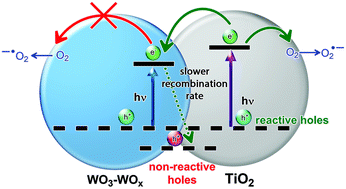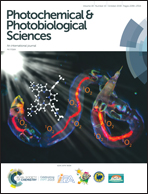Unraveling the photocatalytic properties of TiO2/WO3 mixed oxides†
Abstract
TiO2/WO3 heterojunctions are one of the most investigated systems for photocatalytic applications. However, distinct behavior can be found in the literature depending on the pollutant to be degraded and the photocatalyst preparation conditions. Some authors reported improved photocatalytic activities in relation to TiO2, while others a deleterious effect. Different factors have been identified to influence the activity of such systems. In this work, a systematic investigation of TiO2/WO3 samples with different W/Ti ratios (0–100%) was carried out using different pollutants as targets (gaseous NO, acetaldehyde and aqueous methylene blue solutions). A detailed structural investigation along with transient absorption studies and photoelectrochemical measurements allowed the rationalization of some of the previously reported factors that control the TiO2/WO3 photoactivity, i.e. the inability to reduce molecular oxygen, the stabilization of the anatase phase and the adsorption surface properties. The investigations also identified a factor not previously reported: in TiO2/WO3 systems, a fraction of long-lived holes do not take part in the interfacial charge transfer to efficient hole quenchers, such as methanol. This behavior seems to be related to the doping of the TiO2 matrix with W(VI) and plays a key role in the photocatalytic activity.



 Please wait while we load your content...
Please wait while we load your content...